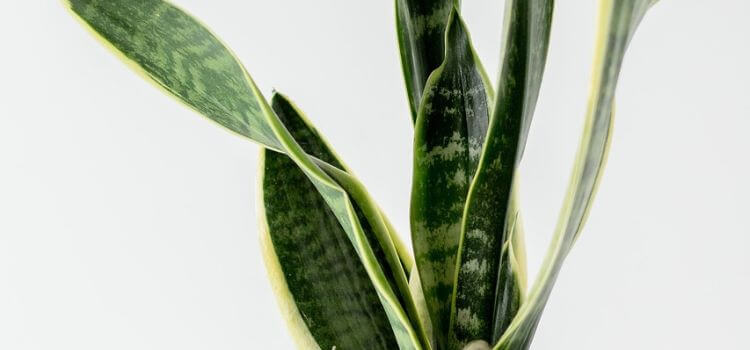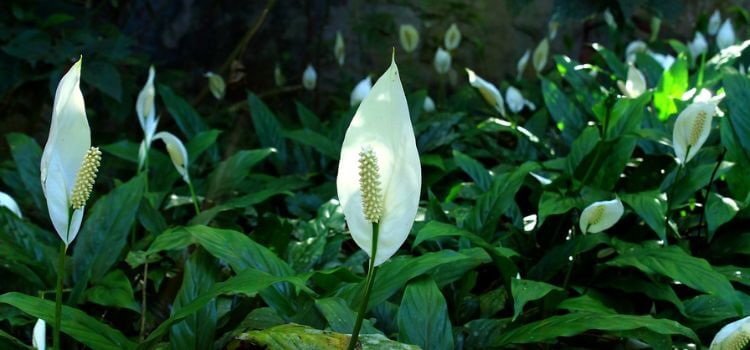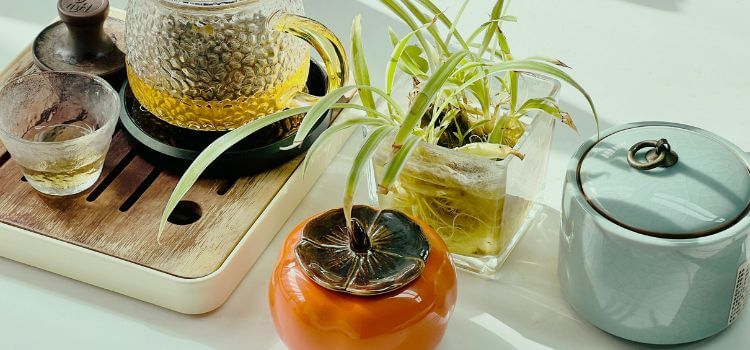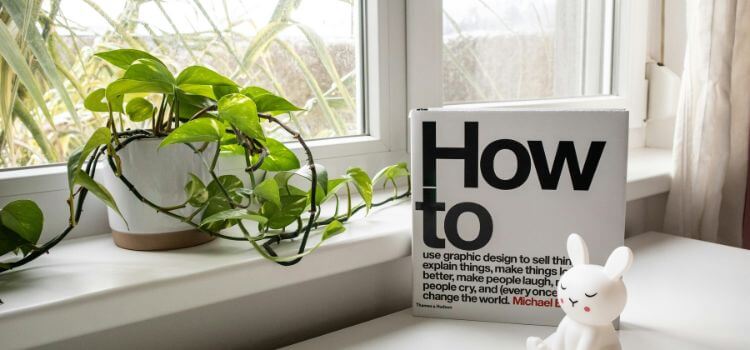As an Amazon Associate, I earn from qualifying purchases.
Snake plants, ZZ plants, and Pothos thrive in low light conditions. They are ideal for enhancing indoor spaces with limited sunlight.
Indoor plants not only beautify your home but also improve air quality. Some plants thrive even in low light conditions, making them perfect for rooms with minimal natural light. Snake Plants, also known as Sansevieria, are extremely hardy and can survive in various lighting conditions.
ZZ Plant (Zamioculcas zamiifolia) is another resilient option known for its glossy, dark green leaves. Pothos, or Devil’s Ivy, is popular for its trailing vines and ease of care. These plants require minimal maintenance, making them excellent choices for beginners or busy individuals. Adding these low-light plants can create a greener, more refreshing environment in your home.

Benefits Of Indoor Plants
Indoor plants bring life to any room. They are especially helpful in low-light rooms, where they thrive with little sunlight. Indoor plants not only add beauty but also offer many health benefits.
Improving Air Quality
Many indoor plants can help improve air quality. They absorb carbon dioxide and release oxygen. This process makes the air fresher. Some plants also remove toxins from the air. For example:
- Spider Plant: Removes formaldehyde and xylene.
- Snake Plant: Absorbs carbon dioxide at night.
- Peace Lily: Removes mould spores from the air.
These plants are easy to care for and need little sunlight. They fit well in bathrooms, bedrooms, and offices. By having these plants, you can enjoy cleaner air every day.
Reducing Stress
Plants can help reduce stress and make you feel calmer. Studies show that being around plants can lower blood pressure. They also reduce anxiety. Here are a few great plants for stress reduction:
- Lavender: Known for its calming scent.
- Aloe Vera: Helps with relaxation and healing.
- Jasmine: Improves mood and reduces stress.
These plants are not only beautiful but also soothing. They help create a peaceful environment. Please place them in your living room or bedroom for best results.
Boosting Productivity
Indoor plants can also boost productivity. They help improve focus and memory. Studies show that people working near plants are more creative. Some plants that help with productivity include:
- English Ivy: Reduces mould and improves air quality.
- Golden Pothos: Easy to care for and reduces toxins.
- ZZ Plant: Needs very little light and water.
These plants can be placed in your home office or study area. They help create a fresh and inspiring workspace.
Top 5 Indoor Plants For Low-Light Rooms
Low-light rooms can be tricky for plant lovers. Many plants need lots of sunlight to thrive. Luckily, some indoor plants can grow well in low light. These plants are perfect for dark corners or rooms with few windows. Let’s explore the top 5 indoor plants for low-light rooms.
Snake Plant
The Snake Plant, also known as the Mother-in-Law’s Tongue, is perfect for low-light rooms. It is very tough and can survive with little care. It has long, stiff leaves that grow straight up. The leaves are green with yellow or white edges.
Snake Plants are straightforward to care for. They don’t need much water. Water them only when the soil is dry; overwatering can harm them. Snake plants can also clean the air in your room. They remove toxins like formaldehyde and benzene, which makes them great for improving air quality.
- Light: Low to bright indirect light
- Water: Once every 2-3 weeks
- Soil: Well-draining potting mix
- Temperature: 60-85°F (15-29°C)
Zz Plant
The ZZ Plant is another excellent choice for low-light rooms. It has shiny, dark green leaves that can grow up to 3 feet long. The ZZ Plant is very hardy and can survive neglect and low light. This makes it perfect for busy people or those new to plants.
ZZ Plants need very little water. They have thick, potato-like rhizomes that store water, helping them survive droughts. Water them only when the soil is completely dry. ZZ Plants can also purify the air, removing toxins like xylene and toluene.
- Light: Low to bright indirect light
- Water: Once every 2-3 weeks
- Soil: Well-draining potting mix
- Temperature: 65-75°F (18-24°C)
Pothos
Pothos is a popular plant for low-light rooms. Its heart-shaped leaves come in various colours, some with white or yellow variegation. Pothos can grow in low light and is very easy to care for. It can also grow in water, making it very versatile.
Pothos needs water when the top inch of soil is dry. It can also be grown in a jar of water, making it a great plant for beginners. Pothos can help clean the air by removing toxins like formaldehyde and xylene.
- Light: Low to bright indirect light
- Water: Once a week or when the soil is dry
- Soil: Well-draining potting mix
- Temperature: 60-80°F (16-27°C)
Peace Lily
Peace Lily is a beautiful plant for low-light rooms. It has dark green leaves and white flowers that look like white flags of peace. This plant thrives in low light and is easy to care for. It blooms even in low light, adding beauty to any room.

Peace Lilies need water when the top inch of soil is dry. They can also help clean the air, removing toxins like ammonia, formaldehyde, and benzene. This makes them perfect for improving indoor air quality.
- Light: Low to bright indirect light
- Water: Once a week or when the soil is dry
- Soil: Well-draining potting mix
- Temperature: 65-80°F (18-27°C)
Spider Plant
Spider plants are fun for low-light rooms. They have long, arching green leaves with white stripes. Spider Plants can produce small “baby” plants that hang from the mother plant, making them look like spiders, hence the name.

Spider Plants need water when the top inch of soil is dry. They are straightforward to care for and can grow in low light. Spider Plants can also purify the air. They remove toxins like formaldehyde and xylene.
- Light: Low to bright indirect light
- Water: Once a week or when the soil is dry
- Soil: Well-draining potting mix
- Temperature: 60-75°F (16-24°C)
Raed Also: How Fast Do Snake Plants Grow
Tips For Caring For Indoor Plants In Low Light
Indoor plants are a great way to brighten up your home. Low-light rooms can make it tricky to keep plants healthy. Choosing the right plants and caring for them properly is critical. Here are some tips for caring for indoor plants in low light.
Proper Watering Techniques
Watering your plants the right way is very important. Overwatering can harm your plants. Underwatering can also be an issue. Here are some tips for proper watering:
- Check the soil before watering. It should be dry about an inch deep.
- Use room temperature water. Cold water can shock the roots.
- Water the soil, not the leaves. Wet leaves can lead to mould.
- Drain excess water. Make sure the pot has drainage holes.
Watering schedules can also help. Keep a calendar or set reminders to ensure that you remember to water your plants.
Different plants have different needs. Research your specific plant’s needs for the best results.
Choosing The Right Potting Soil
Potting soil is crucial for plant health. Different plants need different types of soil. For low-light plants, choose soil that retains moisture but drains well.
Here are some tips:
- Use a well-draining mix. Avoid soil that stays soggy.
- Add perlite or sand to your soil mix. This helps with drainage.
- Check for nutrients in the soil. Plants need nutrients to grow.
A good potting mix can make a big difference. Avoid using garden soil, as it can be too dense and may contain pests.
Avoiding Over-fertilization
Fertilizing can help your plants grow. But too much fertilizer can harm your plants. Here’s how to avoid over-fertilization:
- Read the label on your fertilizer. Follow the instructions carefully.
- Use a balanced fertilizer. Look for one that has equal parts nitrogen, phosphorus, and potassium.
- Fertilize less often. Low-light plants need less fertilizer.
Yellowing leaves and burnt tips are signs of over-fertilization. If you notice these signs, flush the soil with water to remove excess fertilizer.
When it comes to fertilizing indoor plants, less is more. It’s better to under-fertilize than to overdo it.
Additional Ideas To Brighten Up Low Light Rooms
Indoor plants can transform any space. They bring life and greenery to your home. But not all rooms get plenty of sunlight. Low-light rooms can still house beautiful plants. You need to choose the right ones. Some plants thrive in low light. This blog will also share extra ideas. These ideas will help brighten up your low-light rooms.
Using Mirrors To Reflect Light
Mirrors can be your best friend in low-light rooms. They help bounce light around the space. This makes the room feel brighter. Place mirrors across from windows. This will reflect the natural light. You can also use multiple small mirrors. Arrange them in a pattern on a wall. This adds both light and style.
Here are some mirror placement tips:
- Opposite a window: Maximizes the reflection of natural light.
- Behind light sources: Enhances the effect of lamps and candles.
- In narrow spaces: Makes hallways and small rooms feel larger.
Mirrors can also serve as decorative pieces. Choose mirrors with beautiful frames. They add charm and personality to your room.
Optimizing Natural Light
Natural light is the best light source for any room. Even low-light rooms can benefit from it. Start by keeping windows clean. Dirty windows block a lot of light. Use light-coloured curtains or blinds. They let more light pass through. Avoid heavy, dark drapes. They absorb light and make the room darker.
Furniture placement is also essential:
- Avoid blocking windows: Move large furniture away from windows.
- Use reflective surfaces: Glass and metal furniture can reflect light.
- Choose light colours: Light-colored furniture and walls reflect more light.
Minor adjustments can make a big difference. Even low-light rooms can feel brighter and more inviting.
Adding Artificial Lighting
Artificial lighting is essential in low-light rooms. It can complement natural light and mirrors. Start with overhead lights. They provide general illumination. Use LED bulbs for energy efficiency. You can also add floor lamps. They brighten up dark corners. Table lamps are fantastic for task lighting. Place them on desks and side tables.
Consider these lighting options:
- String lights: Add a cosy ambience to any room.
- Wall sconces: Save space and provide focused light.
- Under-cabinet lights: Perfect for kitchens and workspaces.
Different types of lighting can create layers of light, making the room feel balanced and well-lit. Experiment with different light sources to find the combination that works best for your space.
Frequently Asked Questions
What Is The Best Indoor Plant For Low Light?
The best indoor plant for low light is the snake plant. It thrives in low light and requires minimal care. Snake plants also improve air quality, making them a perfect choice for indoor spaces.
What Plants Are Good For Dark Bedrooms?
Snake plants, pothos, and ZZ plants thrive in dark bedrooms. They require minimal light and are easy to care for.
Which Indoor Plant Doesn’t Need Sunlight?
The ZZ plant thrives without sunlight; it’sng is perfect for low-light areas. Snake plants and pothos also do well in low light.
Can Indoor Plants Survive In Low Light?
Yes, many indoor plants can survive in low light. Examples include snake plants, pothos, and ZZ plants. These plants adapt well to dim conditions, ideal for low-light environments. To maintain their health, ensure proper watering and occasional indirect sunlight.
Conclusion
Transform your low-light rooms with the best indoor plants. These plants thrive without much sunlight, enhancing your space. Enjoy the benefits of cleaner air and a touch of nature indoors. Select the right plants and watch your rooms come to life, even in low-light conditions.
Happy planting!

